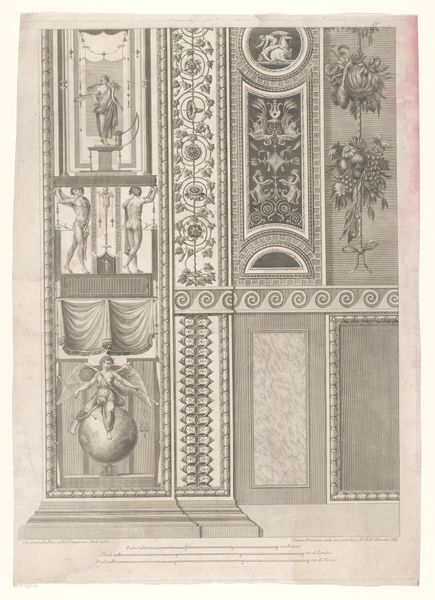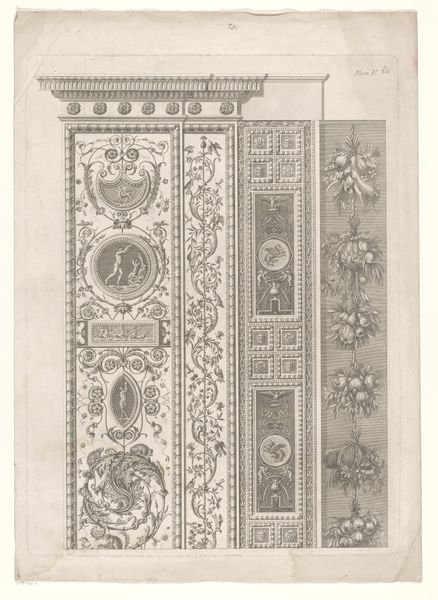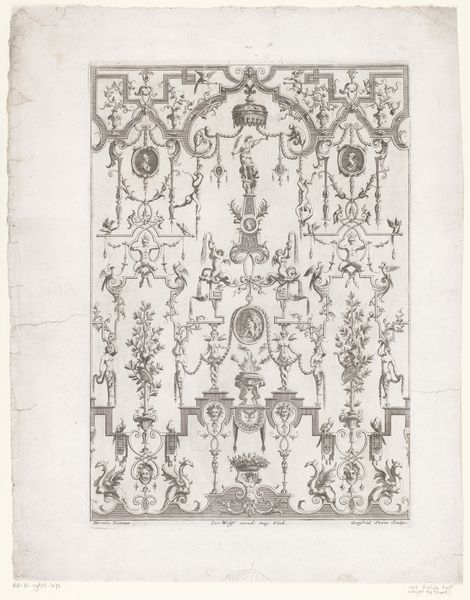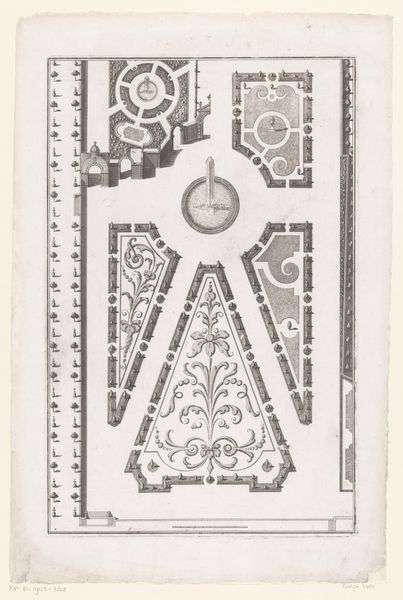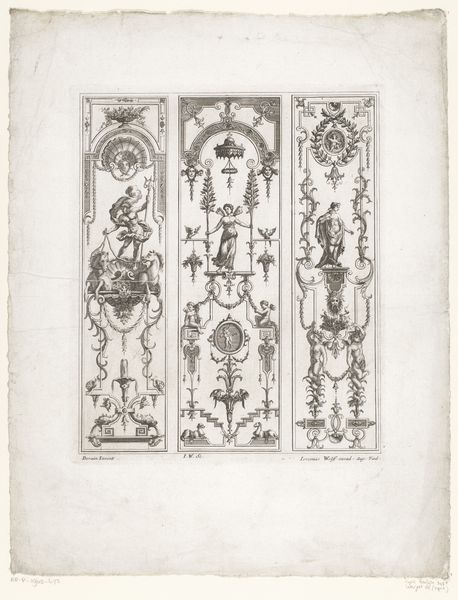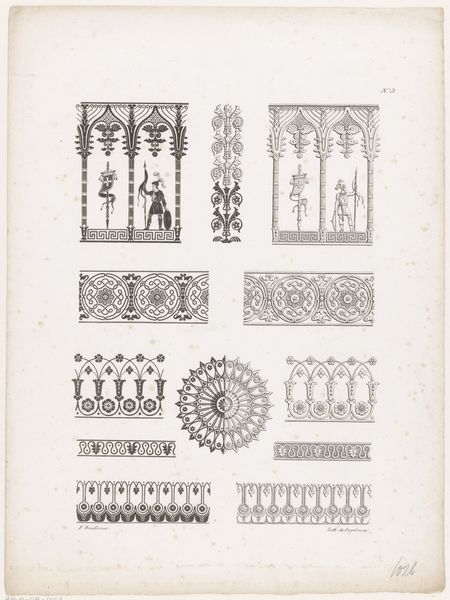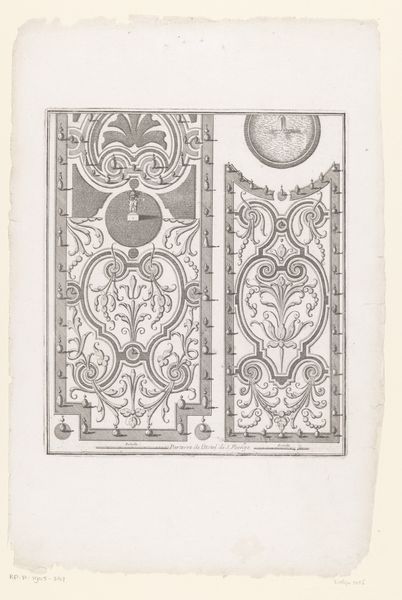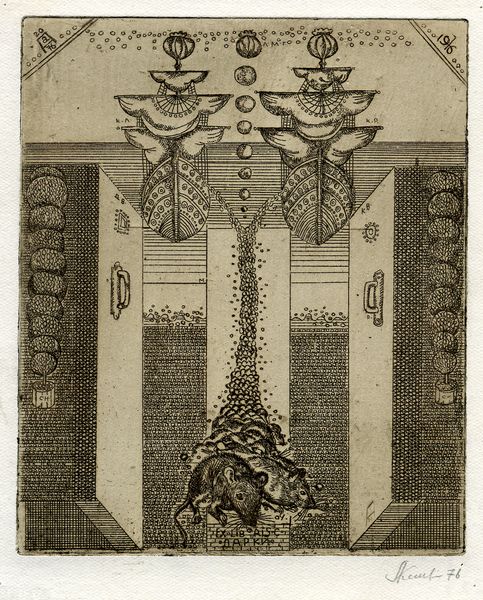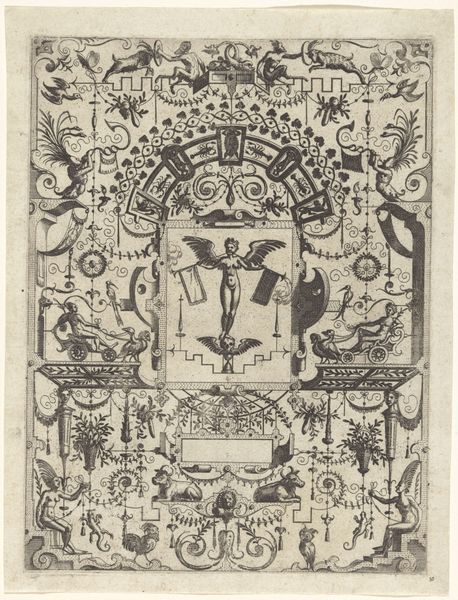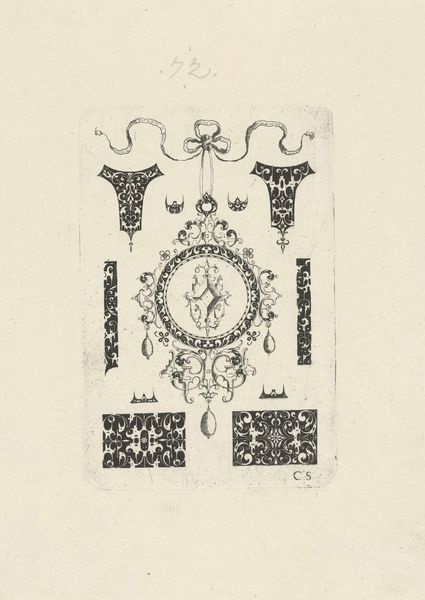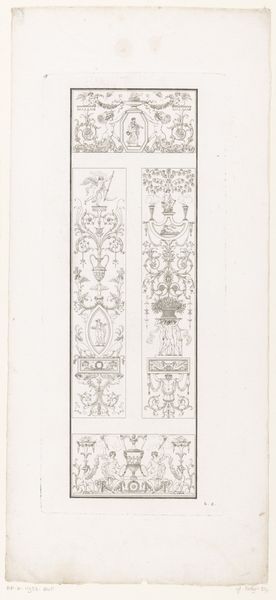
drawing, etching, pen, engraving
#
drawing
#
aged paper
#
toned paper
#
pen drawing
#
mechanical pen drawing
#
pen sketch
#
etching
#
old engraving style
#
form
#
personal sketchbook
#
geometric
#
pen-ink sketch
#
pen work
#
sketchbook drawing
#
pen
#
decorative-art
#
engraving
Dimensions: height 559 mm, width 406 mm
Copyright: Rijks Museum: Open Domain
Here is the lower section of a decorative pilaster made by Giovanni Ottaviani in the 18th century. As an engraver in Rome, Ottaviani was part of a tradition of printmaking that disseminated classical and neoclassical designs. Notice the recurring motifs of idealized human forms and ornate botanical elements. These elements, rendered with a precision characteristic of the era, draw on ancient Greco-Roman aesthetics and point to its revival during the Neoclassical period. What you see here is not just surface decoration. The artist encodes a hierarchy of values that often served the aristocratic classes. Classical art was frequently mined to legitimize power. Decorative elements are positioned in such a way as to evoke a sense of grandeur and timelessness, reflecting and shaping perceptions of wealth and social status in eighteenth-century Europe. The scale and detail ask the viewer to consider the intersections of power, beauty, and historical memory.
Comments
No comments
Be the first to comment and join the conversation on the ultimate creative platform.
